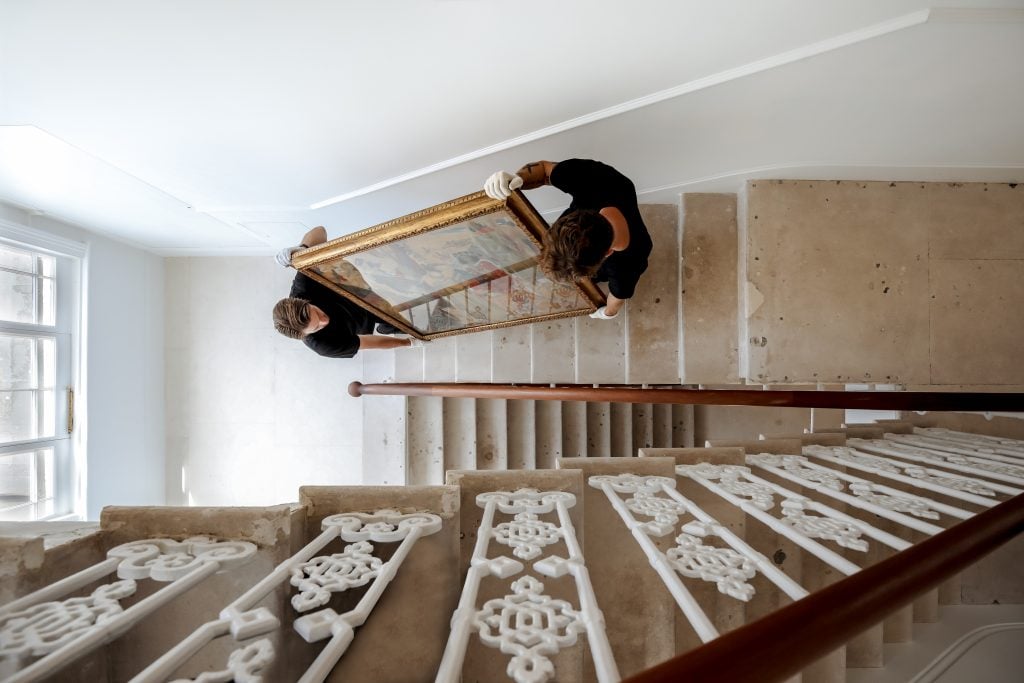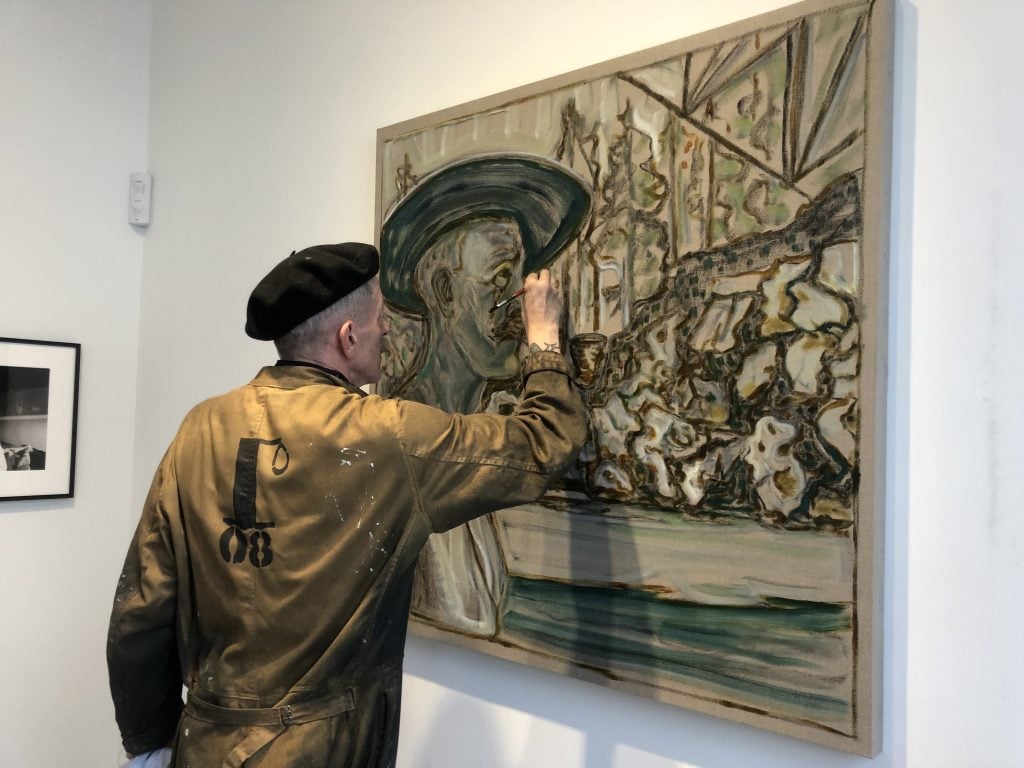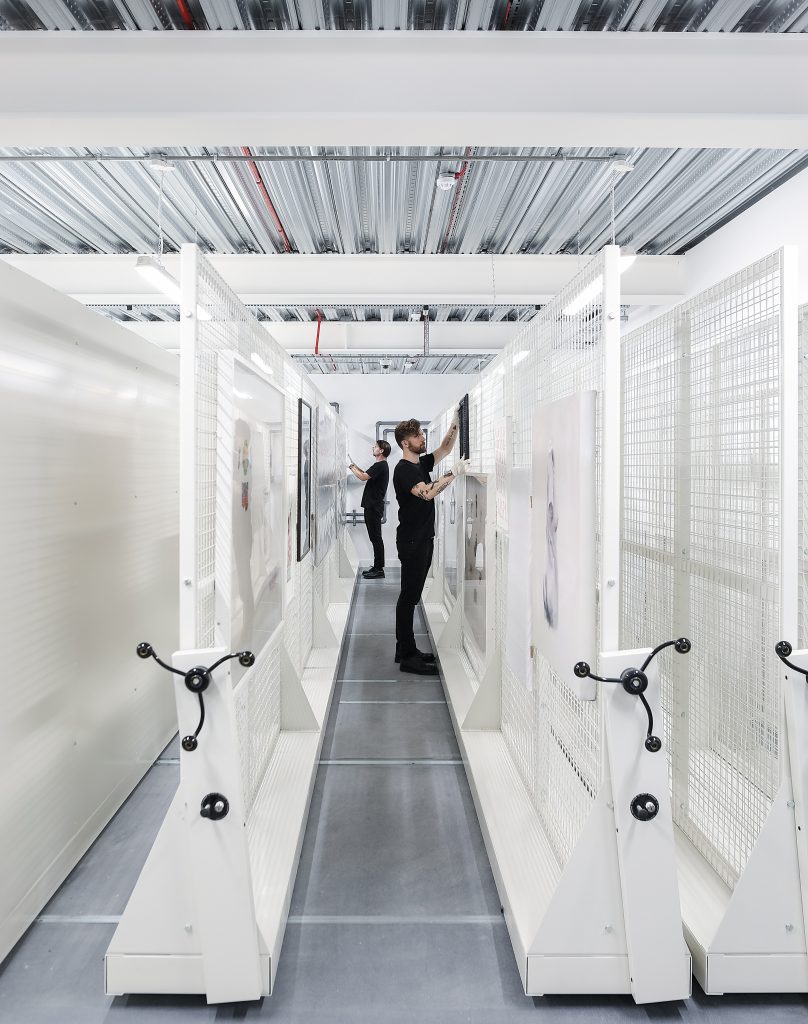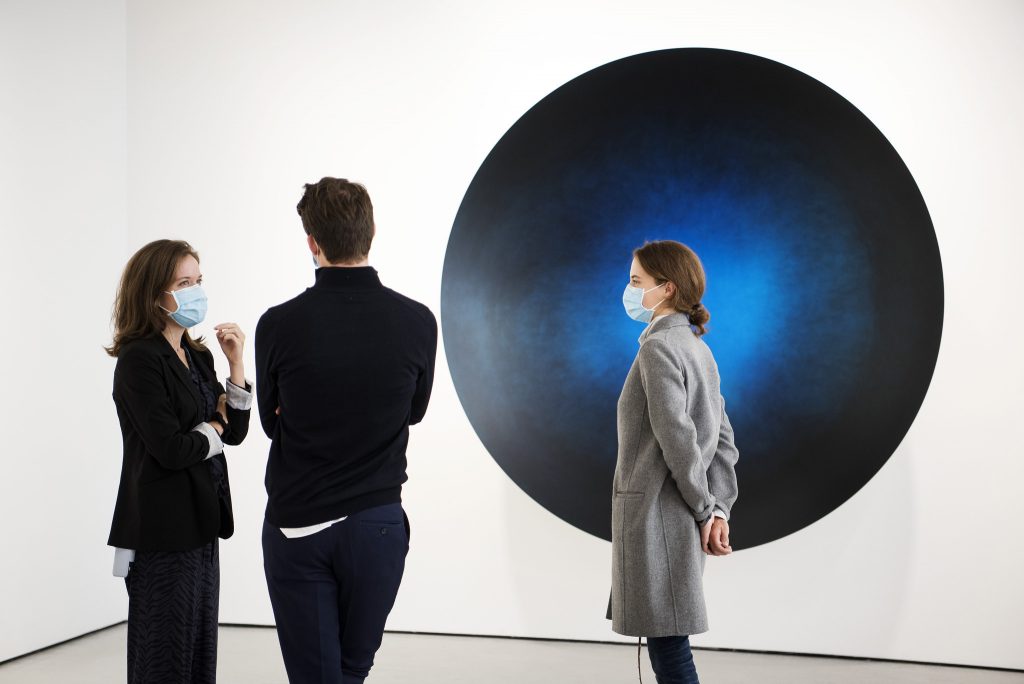Galleries
With London’s High-Priced Real-Estate Market in Flux, Galleries Are Embracing the Pop Up. Is the Trend Here to Stay?
As galleries abandon permanent spaces for pop-up models, is London's white-hot rental market finally cooling down?

As galleries abandon permanent spaces for pop-up models, is London's white-hot rental market finally cooling down?

Naomi Rea

The exorbitant cost of rent in London has slowly been pushing galleries out for years. As the additional burdens of the pandemic took hold over the past six months, many central London galleries have been feeling added pressure. With office workers being encouraged to work from home, the city’s typically bustling commercial centers have emptied out, even further decreasing the already dwindling footfall at galleries, and prompting some to question whether a permanent space is even worth having anymore.
The squeeze is hitting even the most established galleries, which are looking around for more sustainable exhibition strategies. On Thursday, veteran gallerist Marian Goodman announced she would be shuttering her London outpost in favor of a more nimble approach to exhibitions.
“The art world has undergone dramatic changes in recent years, and the current health crisis and Brexit have introduced even more uncertainty into the market, especially for galleries operating in London,” Goodman said in a statement explaining the move. Through its new Marian Goodman Projects initiative, the gallery will organize temporary exhibitions in different venues around the city.
Goodman is one of a growing number of businesses seduced by the pop-up exhibition strategy. Cromwell Place, a new gallery complex embracing the temporary exhibition model in South Kensington, was buzzing during its Frieze Week launch. The row of historic buildings offers 45,000 square feet with the option to lease gallery space on a temporary basis.
“No galleries move in permanently,” Cromwell Place’s membership director May Calil tells Artnet News. “The flexibility of our model means that people use our services on a pay-for-what-you-need basis, whether that’s temporary gallery hire, art handling and logistics, art storage, viewing rooms, meeting rooms, open desks, offices, or events services.”

The artist Billy Childish at work in a makeshift studio inside Lehmann Maupin’s pop up space at Cromwell Place. Photo by Naomi Rea.
The model has certainly proved an attractive proposition, with some 50 different galleries, advisors, dealers, collectors, and foundations signed up to its membership scheme, including the US gallery Lehmann Maupin. The exhibition spaces, which are rented for periods between two and six weeks, are priced between £1,979 ($2,581) and £20,173 ($26,316) per week, depending on the season in the art calendar as well as the size of the space—a fraction of the cost of a fixed monthly overhead in London any way you slice it.
The location of the new hub in South Kensington is another point of attraction. The historic museum district is also a residential area that’s home to many deep pocketed collectors.
Among the new arrivals to Cromwell Place is the founder of the Ethiopian gallery Addis Fine Art, Rakeb Sile, who is opening up an office in the complex in the New Year, and plans to use the flexible gallery spaces to mount exhibitions up to four times a year, beginning with a show of work by the Ethiopian modernist Tadesse Mesfin, opening October 28. Sile tells Artnet News that the flexible model was preferable to being “tied down” to a permanent gallery, and added that she was drawn to the strategic possibilities presented by the art world community being built there.

Art storage space at Cromwell Place. Photo by Taran Wilku.
Meanwhile, as businesses and people continue their exodus from the city, there has been some evidence that the pandemic has carved out opportunities within London’s expensive real-estate landscape. The Accra-based Gallery 1957 has just opened a London outpost around the corner from Cromwell Place, with an exhibition of the Ghanaian artist Kwesi Botchway.
While the gallery is cutting down on its usual seven or eight art fairs a year to free up the resources for the permanent space, founder Marwan Zakhem says he was able to secure a good deal on rent. While expanding to London had been a longstanding ambition, Zakhem added that the current landscape “galvanized” this process, as difficulty in traveling cemented the need for an on-the-ground presence.
Elsewhere, in the emptied out commercial center of Mayfair, which has traditionally been London’s upmarket gallery hub, and where punishing overheads been pushing galleries out for some time, there are some indications that landlords are cutting deals in an effort to claw back tenants to the market.

Mandy El-Sayegh presented by Lehmann Maupin, LIVE, Frieze Week 2020. Photo by Deniz Guzel. Courtesy of Deniz Guzel/Frieze.
There was a flurry of activity on Mayfair’s Cork Street in particular during Frieze week, with a new 10,000-square-foot gallery, Saatchi Yates, owned by Charles Saatchi’s daughter Phoebe and her husband Arthur Yates making its debut. Meanwhile, the fair itself rented out an empty townhouse to stage its performance program, and three galleries—Lisson, Sadie Coles HQ, and Stephen Friedman—also rented some empty gallery spaces to mount pop-up exhibitions in a more heavily trafficked area for the week.
The splashy gallery complex designed by Rogers Stirk Harbour and Partners, which hosted the temporary shows, has largely remained empty since it was completed in 2018. The first permanent gallery to move in was South Africa’s Goodman Gallery, which arrived last year. The line taken by the property managers is that they are waiting for just the right gallery tenants, but it is hard to discount the role London’s ballooning rental market might have played in the delay.

Lisson Gallery, Frieze Week 2020. Photo by Linda Nylind. Courtesy of Linda Nylind/Frieze.
A company called the Pollen Estate owns much of the real estate on Cork Street. “Our approach on rents is to discuss terms on a case-by-case basis. The market sets rental levels, not us,” its property director, Julian Stocks, tells Artnet News.
Stocks added that they did offer “attractive rates” for Frieze week, and the senior director of Lisson Gallery, Louise Hayward, confirmed that they were able to negotiate “good terms” on their 2,237-square-foot space, which they have secured through the end of March 2021.
Hayward didn’t comment on whether she foresees opening more permanently on Cork Street, though she did say that having the space in the more commercial art market center paid off. It freed up their two Marylebone premises to mount ambitious museum-scale exhibitions of artists Laure Prouvost and Mary Corse without compromising on the more transactional element of the fair week, during which they were able to sell more than $2 million of work by artists including Lee Ufan and Anish Kapoor.
Stocks says that Pollen is in discussions to find permanent tenants for the remaining spaces, but that they are “happy to continue with this model” until they find the right mix. And with many businesses still struggling to make rent on London properties during the crisis—Stocks says Pollen is offering different forms of rent relief to several tenants—the pop-up model might actually prove a good solution for both sides.